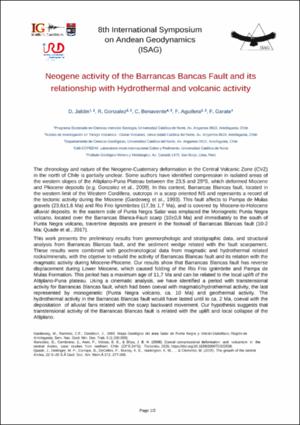Please use this identifier to cite or link to this item:
https://hdl.handle.net/20.500.12544/2592Files in This Item:
| File | Description | Size | Format | |
|---|---|---|---|---|
| Jaldin-Neogene activity of the Barrancas.pdf | Articulo de congreso [resumen] | 243.36 kB | Adobe PDF | View/Open |
This item is licensed under a Creative Commons License












